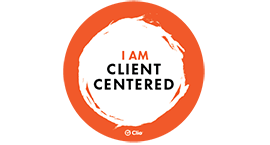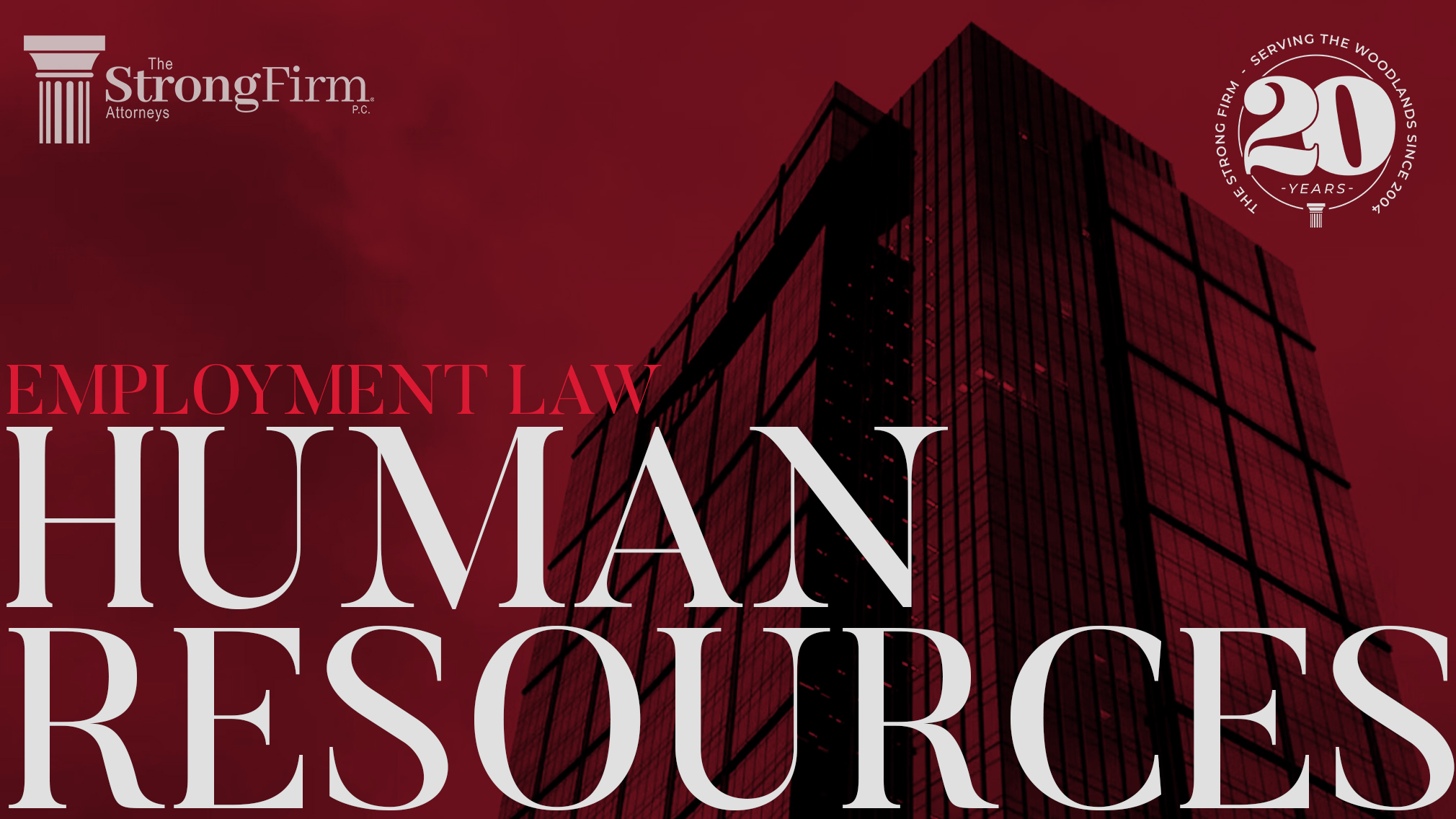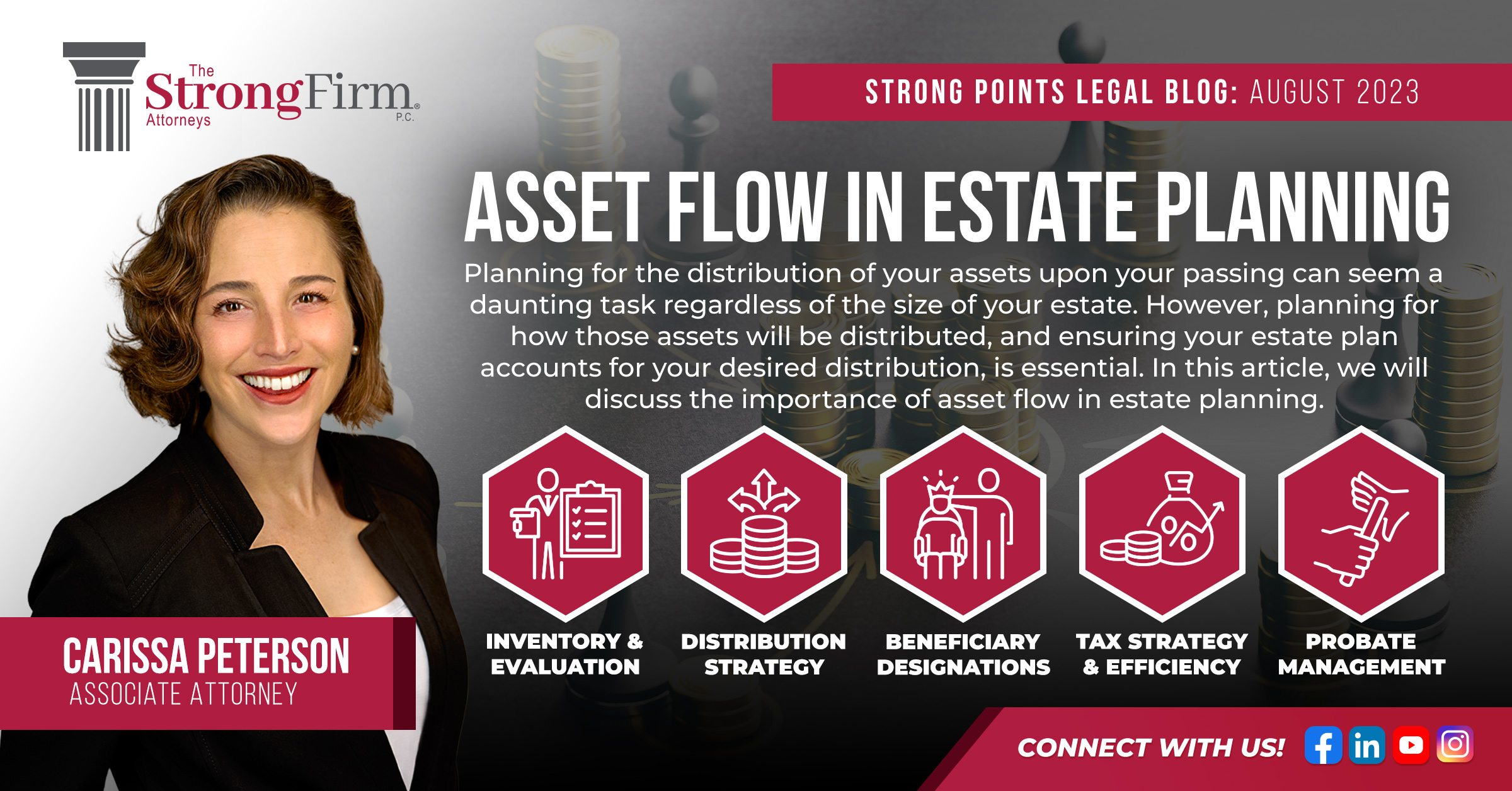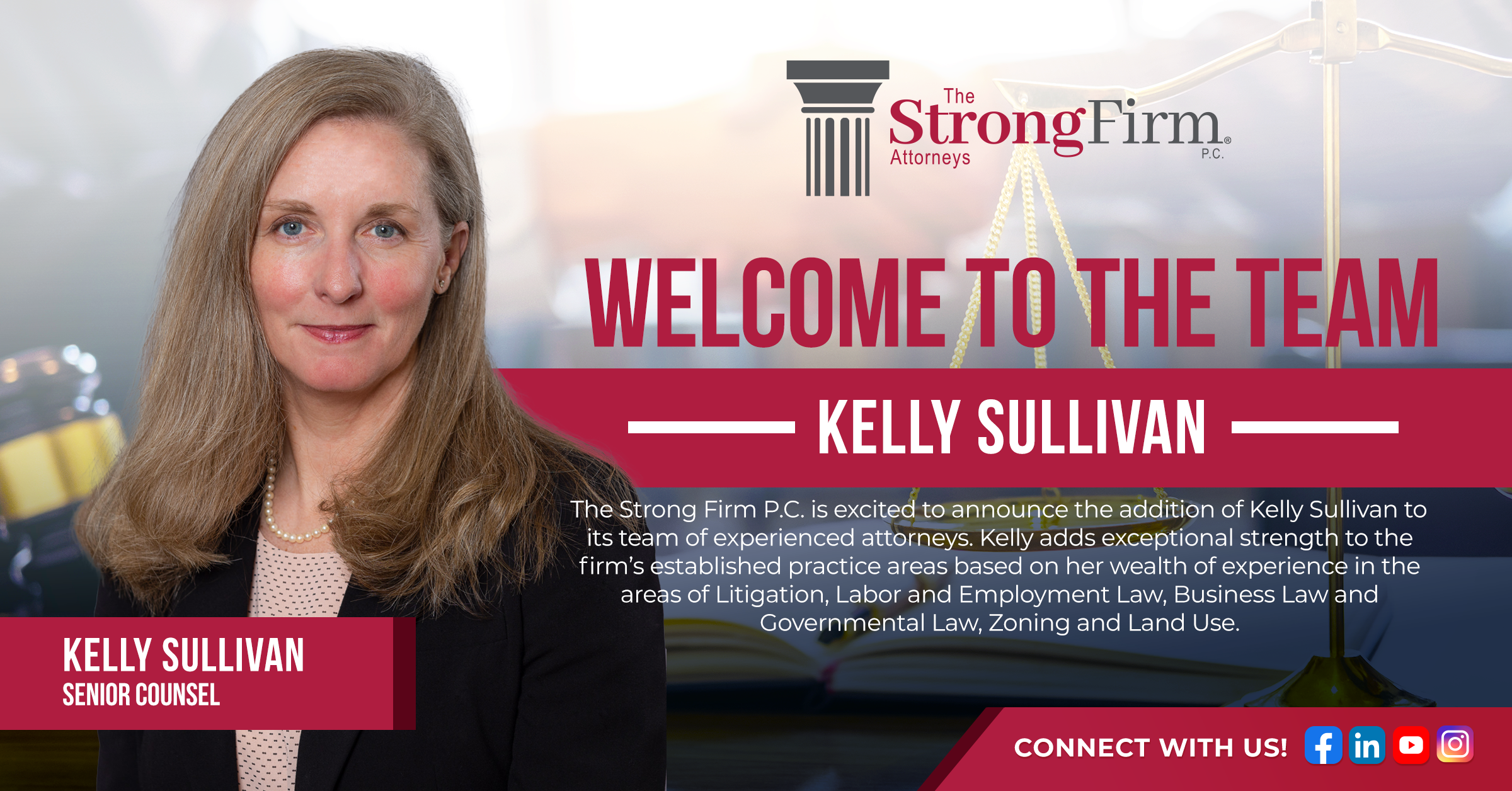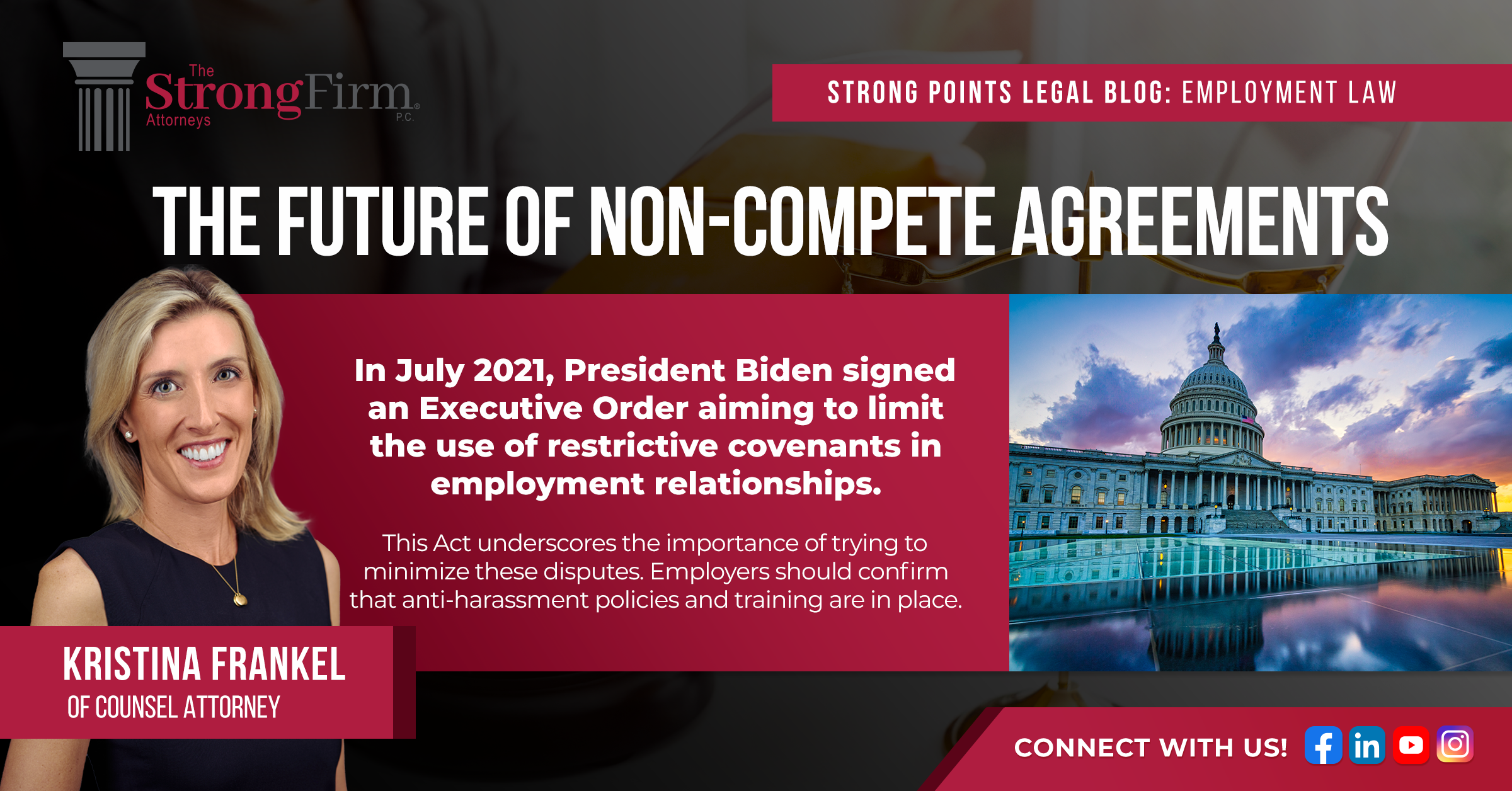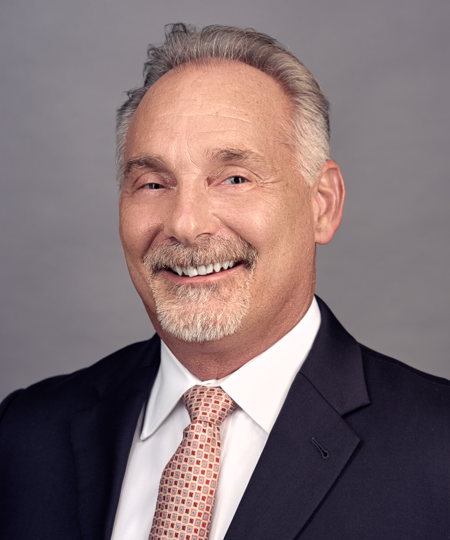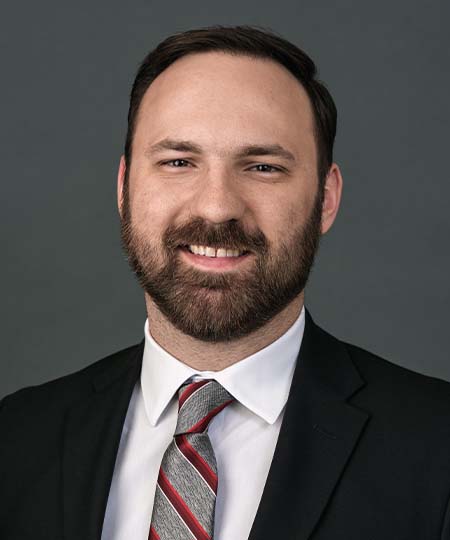The U.S. Senate Committee on Small Business & Entrepreneurship has put together the below summary of programs and assistance available to small business owners and certain nonprofit organizations through the Small Business Administration (“SBA”) under the Coronavirus Aid, Relief, and Economic Security Act (“CARES Act”). The following information is current as of March 30, 2020, but business owners should be aware that the CARES Act was just signed into law late Friday afternoon on March 27, 2020 by President Donald J. Trump. Details on the available programs are subject to additional refining and clarification, so business owners are encouraged to keep up to date on the latest developments regarding the practical application of all available assistance. The commercial lending department of The Strong Firm P.C. is working around the clock to stay abreast of the latest changes, developments, implications, and applications of the constantly changing programs and protections available to its small business and nonprofit clients so that we can provide our clients with the most current and applicable information available.
Paycheck Protection Program (PPP) Loans
PPP Loans provide cash-flow assistance through 100% federally guaranteed loans to employers who maintain their payroll during this emergency. If employers maintain their payroll, the loans would be forgiven, which would help workers remain employed, as well as help affected small businesses and our economy recover quicker after the crisis. PPP loans have a host of attractive features, such as forgiveness of up to 8 weeks of payroll based on employee retention and salary levels, no SBA fees, and at least six months of deferral with maximum deferrals of up to a year. Small businesses and other eligible entities will be able to apply if they were harmed by COVID-19 between February 15, 2020 and June 30, 2020. This program is retroactive to February 15, 2020, in order to help bring workers who may have already been laid off back onto payrolls. Loans are available through June 30, 2020.
QUESTION: What types of businesses and entities are eligible for a PPP loan?
ANSWER: Businesses and entities must have been in operation on February 15, 2020.
- Small business concerns, as well as any business concern, a 501(c)(3) nonprofit organization, or a 501(c)(19) veterans organization that has fewer than 500 employees.
- Individuals who operate a sole proprietorship or as an independent contractor and eligible self-employed individuals.
- Affiliation rules are also waived for any business concern operating as a franchise that is assigned a franchise identifier code by the Administration, and company that receives funding through a Small Business Investment Company.
QUESTION: What types of non-profits are eligible?
ANSWER: In general, 501(c)(3) and 501(c)(19) non-profits with 500 employees or fewer, as most non-profit SBA size standards are based on revenue, not employee number.
QUESTION: How is the loan size determined?
ANSWER: Depending on your business’s situation, the loan size will be calculated in different ways (see below). The maximum loan size is always $10 million.
- If you were in business February 15, 2019 – June 30, 2019: Your max loan is equal to 250% of your average monthly payroll costs during that time period. If your business employs seasonal workers, you can opt to choose March 1, 2019 as your time period start date.
- If you were not in business between February 15, 2019 – June 30, 2019: Your max loan is equal to 250 percent of your average monthly payroll costs between January 1, 2020 and February 29, 2020.
- If you took out an Economic Injury Disaster Loan (EIDL) between February 15, 2020 and June 30, 2020 and you want to refinance that loan into a PPP loan, you would add the outstanding loan amount to the payroll sum.
QUESTION: What costs are eligible for payroll?
ANSWER: The following:
- Compensation (salary, wage, commission, or similar compensation, payment of cash tip or equivalent)
- Payment for vacation, parental, family, medical, or sick leave
- Allowance for dismissal or separation
- Payment required for the provisions of group health care benefits, including insurance premiums
- Payment of any retirement benefit
- Payment of State or local tax assessed on the compensation of employees
QUESTION: What costs are not eligible for payroll?
ANSWER: The following:
- Employee/owner compensation over $100,000
- Taxes imposed or withheld under chapters 21, 22, and 24 of the IRS code
- Compensation of employees whose principal place of residence is outside of the U.S.
- Qualified sick and family leave for which a credit is allowed under sections 7001 and 7003 of the Families First Coronavirus Response Act
QUESTION: What are allowable uses of loan proceeds?
ANSWER: The following:
- Payroll costs (as noted above)
- Costs related to the continuation of group health care benefits during periods of paid sick, medical, or family leave, and insurance premiums
- Employee salaries, commissions, or similar compensations (see exclusions above)
- Payments of interest on any mortgage obligation (which shall not include any prepayment of or payment of principal on a mortgage obligation)
- Rent (including rent under a lease agreement)
- Utilities
- Interest on any other debt obligations that were incurred before the covered period
QUESTION: What are the loan term, interest rate, and fees?
ANSWER: For any amounts not forgiven, the maximum term is 10 years, the maximum interest rate is 4%, zero loan fees, zero prepayment fee (SBA will establish application fees caps for lenders that charge).
QUESTION: How is the forgiveness amount calculated?
ANSWER: Forgiveness on a covered loan is equal to the sum of the following payroll costs incurred during the covered 8 week period compared to the previous year or time period, proportionate to maintaining employees and wages (excluding compensation over $100,000):
- Payroll costs plus any payment of interest on any covered mortgage obligation (not including any prepayment or payment of principal on a covered mortgage obligation) plus any payment on any covered rent obligation plus and any covered utility payment.
QUESTION: How do I get forgiveness on my PPP loan?
ANSWER: You must apply through your lender for forgiveness on your loan. In this application, you must include:
- Documentation verifying the number of employees on payroll and pay rates, including IRS payroll tax filings and State income, payroll and unemployment insurance filings.
- Documentation verifying payments on covered mortgage obligations, lease obligations, and utilities.
- Certification from a representative of your business or organization that is authorized to certify that the documentation provided is true and that the amount that is being forgiven was used in accordance with the program’s guidelines for use.
QUESTION: What happens after the forgiveness period?
ANSWER: Any loan amounts not forgiven are carried forward as an ongoing loan with max terms of 10 years, at a maximum interest rate of 4%. Principal and interest will continue to be deferred, for a total of 6 months to a year after disbursement of the loan. The clock does not start again.
QUESTION: Can I get more than one PPP loan?
ANSWER: No, an entity is limited to one PPP loan. Each loan will be registered under a Taxpayer Identification Number at SBA to prevent multiple loans to the same entity.
QUESTION: Where should I go to get a PPP loan from?
ANSWER: All current SBA 7(a) lenders are eligible lenders for PPP. The Department of Treasury will also be in charge of authorizing new lenders, including non- bank lenders, to help meet the needs of small business owners.
QUESTION: How does the PPP loan coordinate with SBA’s existing loans?
ANSWER: Borrowers may apply for PPP loans and other SBA financial assistance, including Economic Injury Disaster Loans (EIDLs), 7(a) loans, 504 loans, and microloans, and also receive investment capital from Small Business Investment Corporations (SBICs). However, you cannot use your PPP loan for the same purpose as your other SBA loan(s). For example, if you use your PPP to cover payroll for the 8-week covered period, you cannot use a different SBA loan product for payroll for those same costs in that period, although you could use it for payroll not during that period or for different workers.
QUESTION: How does the PPP loan work with the temporary Emergency Economic Injury Grants and the Small Business Debt Relief program?
ANSWER: Emergency Economic Injury Grant and Economic Injury Disaster Loan (EIDL) recipients and those who receive loan payment relief through the Small Business Debt Relief Program may apply for and take out a PPP loan as long as there is no duplication in the uses of funds. Refer to those sections for more information.
SMALL BUSINESS DEBT RELIEF PROGRAM
This program will provide immediate relief to small businesses with non-disaster SBA loans, in particular 7(a), 504, and microloans. Under it, SBA will cover all loan payments on these SBA loans, including principal, interest, and fees, for six months. This relief will also be available to new borrowers who take out loans within six months of the President signing the bill into law.
QUESTION: Which SBA loans are eligible for debt relief under this program?
ANSWER: 7(a) loans not made under the Paycheck Protection Program (PPP), 504 loans, and microloans. Disaster loans are not eligible.
QUESTION: How does debt relief under this program work with a PPP loan?
ANSWER: Borrowers may separately apply for and take out a PPP loan, but debt relief under this program will not apply to a PPP loan.
QUESTION: How do I know if I’m eligible for a 7(a), 504, or microloan?
ANSWER: In general, businesses must meet the size standard definition under the SBA’s guidelines, be based in the U.S., be able to repay, and have a sound business purpose. To check whether your business is considered small, you will need your business’s 6-digit North American Industry Classification System (NAICS) code and 3-year average annual revenue. Each program has different requirements, see https://www.sba.gov/funding- programs/loans for more details.
QUESTION: What is a 7(a) loan and how do I apply?
ANSWER: 7(a) loans are an affordable loan product of up to $5 million for borrowers who lack credit elsewhere and need access to versatile financing, providing short-term or long-term working capital and to purchase an existing business, refinance current business debt, or purchase furniture, fixtures and supplies. In the program, banks share a portion of the risk of the loan with SBA. There are many different types of 7(a) loans, you can visit https://www.sba.gov/partners/lenders/7a-loan-program/types-7a-loans to find the one that’s best for you. You apply for a 7(a) loan with a bank or a mission-based lender.
QUESTION: What is a 504 loan and how do I apply?
ANSWER: The 504 Loan Program provides loans of up to $5.5 million to approved small businesses with long- term, fixed-rate financing used to acquire fixed assets for expansion or modernization. It is a good option if you need to purchase real estate, buildings, and machinery. You apply through a Certified Development Company, which is a nonprofit corporation that promotes economic development.
QUESTION: What is a microloan and how do I apply?
ANSWER: The Microloan Program provides loans up to $50,000 to help small businesses and certain not-for- profit childcare centers to start up and expand. The average microloan is about $13,000. These loans are delivered through mission-based lenders who are also able to provide business counseling.
QUESTION: I am unfamiliar with SBA loans, can anyone help me apply?
ANSWER: Yes, SBA resource partners are available to help guide you through the loan application process. You can find your nearest Small Business Development Center (SBDC) or Women’s Business Center by visitinghttps://www.sba.gov/localassistance/find/?type=Small%20Business%20Development%20Center.
ECONOMIC INJURY DISASTER LOANS & EMERGENCY ECONOMIC INJURY GRANTS
These grants provide an emergency advance of up to $10,000 to small businesses and private non-profits harmed by COVID-19 within three days of applying for an SBA Economic Injury Disaster Loan (EIDL). To access the advance, you first apply for an EIDL and then request the advance. The advance does not need to be repaid under any circumstance, and may be used to keep employees on payroll, to pay for sick leave, meet increased production costs due to supply chain disruptions, or pay business obligations, including debts, rent, and mortgage payments.
QUESTION: Are businesses and private non-profits in my state eligible for an EIDL related to COVID- 19?
ANSWER: Yes, those suffering substantial economic injury in all 50 states, DC, and the territories may apply for an EIDL.
QUESTION: What is an EIDL and what is it used for?
ANSWER: EIDLs are lower interest loans of up to $2 million, with principal and interest deferment at the Administrator’s discretion, that are available to pay for expenses that could have been met had the disaster not occurred, including payroll and other operating expenses.
QUESTION: Who is eligible for an EIDL?
ANSWER: Those eligible are the following with 500 or fewer employees:
- Sole proprietorships, with or without employees
- Independent contractors
- Cooperatives and employee owned businesses
QUESTION: My private non-profit is not a 501(c)(3). Is it still eligible for an EIDL and a grant?
ANSWER: Yes, if you are a private non-profit with an effective ruling letter from the IRS, granting tax exemption under sections 501(c), (d), or (e) of the Internal Revenue Code of 1954, or if you can provide satisfactory evidence from the State that the non-revenue producing organization or entity is a non-profit one organized or doing business under State law.
However, a recipient that is principally engaged in teaching, instructing, counseling, or indoctrinating religion or religious beliefs, whether in a religious or secular setting, or primarily engaged in political or lobbying activities is not eligible to receive an EIDL. If you are uncertain whether you qualify, please consult with legal counsel to determine whether your organization meets program criteria.
QUESTION: Who is eligible for an Emergency Economic Injury Grant?
ANSWER Those eligible for an EIDL and who have been in operation since January 31, 2020, when the public health crisis was announced.
QUESTION: How long are Emergency Economic Injury Grants available?
Answer: January 31, 2020 – December 31, 2020. The grants are backdated to January 31, 2020 to allow those who have already applied for EIDLs to be eligible to also receive a grant.
QUESTION: If I get an EIDL and/or an Emergency Economic Injury Grant, can I get a PPP loan?
ANSWER: Whether you’ve already received an EIDL unrelated to COVID-19 or you receive a COVID- 19 related EIDL and/or Emergency Grant between January 31, 2020 and June 30, 2020, you may also apply for a PPP loan. If you ultimately receive a PPP loan or refinance an EIDL into a PPP loan, any advance amount received under the Emergency Economic Injury Grant Program would be subtracted from the amount forgiven in the PPP. However, you cannot use your EIDL for the same purpose as your PPP loan. For example, if you use your EIDL to cover payroll for certain workers in April, you cannot use PPP for payroll for those same workers in April, although you could use it for payroll in March or for different workers in April.
QUESTION: How do I know if my business is a small business?
ANSWER: Please visit https://www.sba.gov/size-standards/ to find out if your business meets SBA’s small business size standards. You will need the 6-digit North American Industry Classification Code for your business and your business’s 3-year average annual revenue.
QUESTION: How do I apply for an economic injury disaster loan?
ANSWER: To apply for an EIDL online, please visit https://disasterloan.sba.gov/ela/. Your SBA District Office is an important resource when applying for SBA assistance.
QUESTION: I am unfamiliar with the EIDL process, can anyone help me apply?
ANSWER: Yes, SBA resource partners are available to help guide you through the EIDL application process. You can find the nearest Small Business Development Center (SBDC), Women’s Business Center, or SCORE mentorship chapter at https://www.sba.gov/local- assistance/find/.

















